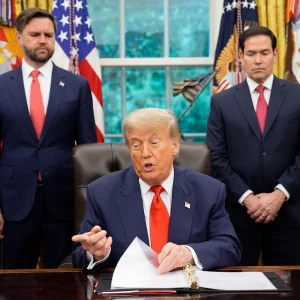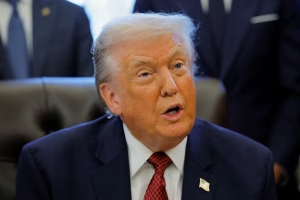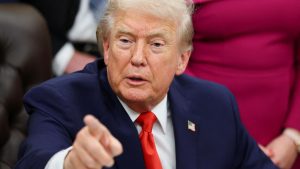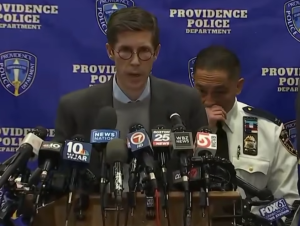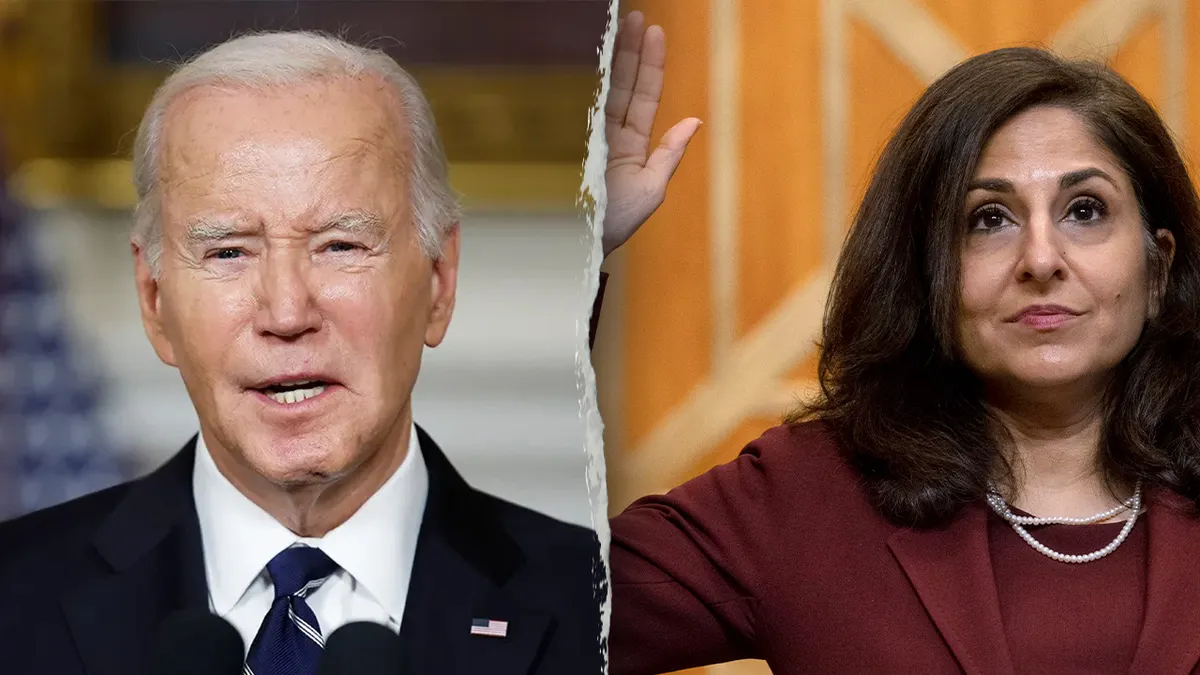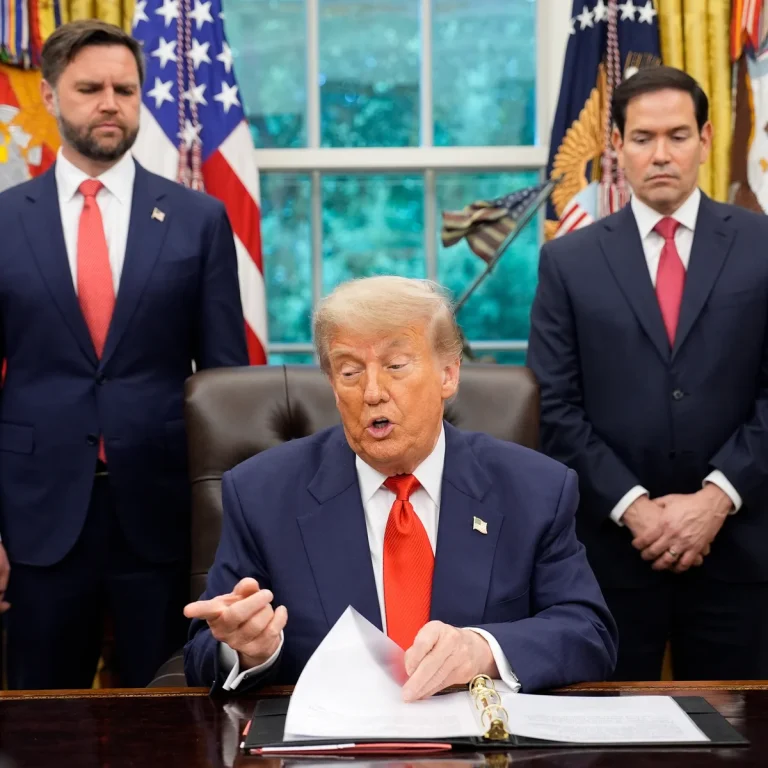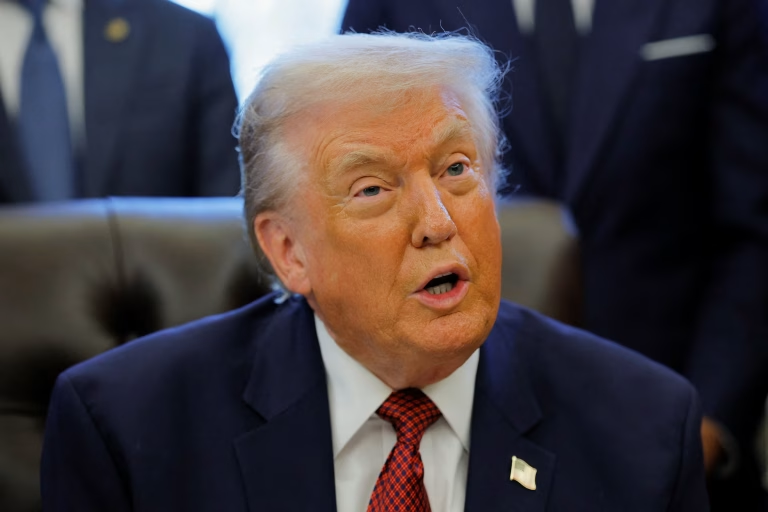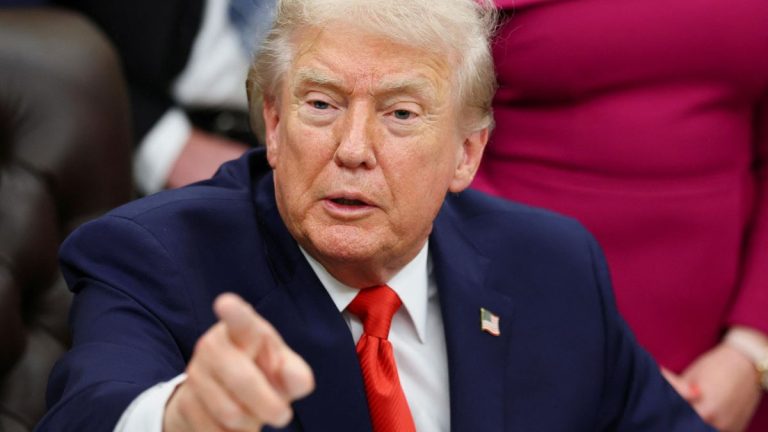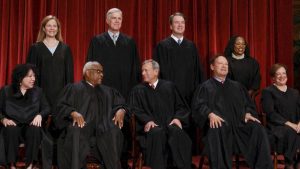In recent weeks, a quiet but consequential development on Capitol Hill has drawn the attention of both legal scholars and political observers. Former White House official Neera Tanden, who served under President Joe Biden, appeared before the House Oversight Committee in a closed-door session to answer questions about her role in managing presidential documents and the use of an autopen — a device that can mechanically reproduce a president’s signature.
While partisan voices have sought to turn this into a sweeping constitutional scandal, the verifiable facts tell a more restrained and nuanced story. What is confirmed by reputable outlets — including ABC News, WSYX, and the Department of Justice’s own legal opinions — is far less sensational than some online commentary suggests.
A Closed-Door Testimony That Sparked a Public Debate
Neera Tanden’s appearance before the Oversight Committee took place in a closed-door session, meaning no cameras or public transcripts were immediately available. According to ABC News and other mainstream outlets, she was questioned primarily about her administrative responsibilities during her tenure in the Biden administration — particularly her role in overseeing the flow of official documents to and from the president.
Tanden, who served as White House staff secretary and later as director of the Domestic Policy Council, was a key figure in coordinating presidential paperwork — everything from briefing materials to executive orders. During her testimony, she acknowledged that she was authorized to manage and direct the use of the autopen, a longstanding instrument used by multiple presidents to affix their signatures when they were unavailable or occupied.
However, Tanden also rejected suggestions of misconduct or deception. According to WSYX reporting, she explicitly denied that the device was ever used without presidential approval or for any purpose beyond what was legally permitted.
Understanding the Autopen: A Historical and Legal Perspective
The autopen — essentially a mechanical arm that reproduces a stored signature — is not new to American governance. Its use dates back more than half a century. Presidents Dwight Eisenhower, Ronald Reagan, George W. Bush, Barack Obama, and Donald Trump have all authorized autopen use for specific purposes, typically involving routine correspondence, ceremonial letters, or signatures made while traveling.
Legally, the Department of Justice’s Office of Legal Counsel (OLC) addressed this very issue in a 2005 opinion. The OLC concluded that a president may lawfully direct a subordinate to affix his signature using an autopen, provided that the president personally made the underlying decision. In other words, what matters constitutionally is not whether the president’s physical hand signed the document, but whether the president authorized the act.
The opinion explicitly states that “mechanical or facsimile signatures do not raise constitutional concerns when the president has made the substantive decision himself.” This legal foundation has been reaffirmed across administrations and is generally accepted in constitutional law circles.
A Familiar Tool, Not a Constitutional Crisis
Despite online speculation, the autopen’s use does not inherently violate presidential authority. The device serves as a tool of administrative efficiency in an office that manages thousands of pages of paperwork daily.
Historically, the autopen has been used to sign condolence letters, routine proclamations, and even major legislation when the president was abroad but had approved the content beforehand. In 2011, President Obama famously used the autopen to sign a critical patriot act extension while traveling in Europe — the first time a president publicly confirmed using it for a bill signing.
What Tanden’s testimony appears to confirm is consistent with this precedent. She indicated that she oversaw the process of managing presidential documents, ensuring that every signed order or memorandum went through established channels and reflected the president’s approval. There is, at this stage, no verified evidence that she or anyone else signed documents without authorization or concealed the president’s involvement.
The Oversight Committee’s Role
The House Oversight Committee, led by Chairman James Comer, has initiated a series of interviews and depositions examining White House procedures related to executive authority, documentation, and internal review. The investigation is still ongoing, and while committee members have framed their inquiry as a broad probe into transparency and accountability, no verified findings of misconduct have been released to the public.
According to committee statements reviewed by major outlets, investigators are reviewing documentation on autopen usage, White House authorization procedures, and internal correspondence. The focus appears to be procedural rather than criminal — examining whether the White House’s administrative processes followed established law.
To date, no official report or evidence suggests illegal activity, nor has the Department of Justice announced any parallel investigation.
Media Coverage and Public Perception
Part of the confusion around the autopen testimony stems from how the story spread across social media and partisan news sites. Several articles with sensational headlines claimed that “thousands of executive actions” could be invalidated or that staff “secretly exercised presidential powers.”
However, mainstream fact-based reporting does not support those claims. As ABC News and WSYX both made clear, the committee’s work is exploratory, and the testimony thus far reflects ordinary administrative practice, not a conspiracy.
This disconnect illustrates how political narratives can outpace legal facts. The autopen, while symbolically intriguing, has long been part of modern executive administration — a practical response to the logistical demands of the presidency, not evidence of hidden governance.
Legal Scholars Weigh In
Constitutional experts have noted that concerns about the autopen often stem from misunderstanding the distinction between decision-making authority and signature execution.
Professor Keith Whittington of Princeton University has explained that “what matters is whether the president actually made the decision — not whether he physically wrote his name.” Similarly, Harvard Law’s Laurence Tribe has stated in past interviews that mechanical signatures are “constitutionally sound” as long as the president authorized the action being signed.
The Justice Department’s own stance echoes this interpretation, emphasizing that the Constitution vests executive power in the president, but does not specify the physical manner of executing signatures once decisions are made.
This understanding forms the backbone of the OLC’s opinion, which has remained unchallenged in court for two decades.
What’s Next for the Investigation
The House Oversight Committee’s inquiry is ongoing, with additional witnesses expected to appear in the coming weeks. Sources familiar with the process suggest that the committee may eventually release a comprehensive report on administrative practices within the Biden White House.
Until then, the verified record shows only that:
-
Neera Tanden testified under oath.
-
She acknowledged managing autopen usage with presidential authorization.
-
The Department of Justice has long recognized the practice as legal.
-
Congress continues to examine the procedures involved.
No credible source has presented proof of fraud, unlawful delegation of authority, or intentional deception.
A Broader Lesson About Modern Governance
Beyond the immediate politics, the autopen episode underscores a larger truth about the 21st-century presidency. The executive branch is now a vast and complex institution, where decision-making involves hundreds of staff members and advisors. The president’s personal involvement in every physical act of governance is practically impossible — hence the need for procedural mechanisms like the autopen.
The essential question, therefore, is not whether staff perform administrative acts, but whether the president retains ultimate decision-making authority. Based on what is publicly verified, the evidence supports that this remains the case.
Conclusion
The controversy surrounding Neera Tanden’s testimony may continue to generate political theater, but the underlying facts are relatively straightforward. Tanden did testify about her role in document management. She confirmed that she had authority to direct autopen usage, consistent with long-established White House practices. The Justice Department’s legal opinions validate such procedures as constitutional, provided the president personally approves the content.
Congressional oversight of these processes is legitimate and ongoing — but as of now, no verified evidence points to a constitutional crisis or unlawful delegation of presidential power.
In an era of heightened partisanship, the autopen saga serves as a reminder that not every dramatic headline reflects a constitutional emergency. Sometimes, the story beneath the surface is one of routine governance, legal precedent, and the often-unseen machinery that keeps the presidency functioning day to day.

Emily Johnson is a critically acclaimed essayist and novelist known for her thought-provoking works centered on feminism, women’s rights, and modern relationships. Born and raised in Portland, Oregon, Emily grew up with a deep love of books, often spending her afternoons at her local library. She went on to study literature and gender studies at UCLA, where she became deeply involved in activism and began publishing essays in campus journals. Her debut essay collection, Voices Unbound, struck a chord with readers nationwide for its fearless exploration of gender dynamics, identity, and the challenges faced by women in contemporary society. Emily later transitioned into fiction, writing novels that balance compelling storytelling with social commentary. Her protagonists are often strong, multidimensional women navigating love, ambition, and the struggles of everyday life, making her a favorite among readers who crave authentic, relatable narratives. Critics praise her ability to merge personal intimacy with universal themes. Off the page, Emily is an advocate for women in publishing, leading workshops that encourage young female writers to embrace their voices. She lives in Seattle with her partner and two rescue cats, where she continues to write, teach, and inspire a new generation of storytellers.
